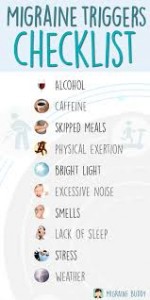Ever since I was a baby, I’ve attracted butterflies. Everyone tells me the story of the time a monarch landed on my face when I was a baby, and I just let it sit there forever. That could explain my love of butterflies, especially with the Monarch. The Monarch butterfly, or Danaus Plexippus, is a fascinating and majestic insect. They begin their life cycle with a process called metamorphosis. This process includes four stages:
The female Monarch will look for a Milkweed plant to lay her egg. There she will lay an egg that is only about 1.2 mm tall! The egg is secure because it can stick to the plant and has a hard exterior that was formed inside of the female. The egg has a hole for the sperm and fertilization. They can stay inside of the egg for 3-8 days.
This stage of the insects life is the stage in which the Monarch eats and eats in order to get ready for the next phase in metamorphosis. The larva has special legs called prolegs that allow them to stick to the leaves it feeds on. The larva feeds on leaves, but it also feeds on the skin that it sheds! The larva with be in this stage for 9-14 days, and within that time, will experience 5 instars (these are the growth periods during molting).
Pupa
During this stage, the larva creates a CHRYSALIS where they will complete their transformation into an adult butterfly. A chrysalis is different from a cocoon because of the outside. A cocoon is typically spun by a moth, and has a different silky outer shell. The Monarch will spend 8-15 days in this stage. It is spent growing the wings.
Adult
The adult Monarch will spend the remainder of its life reproducing. The female will lay her eggs, and the male will fertilize them. There are a few differences between the male and female that help distinguish them.
THE MALE Monarch has thinner veins, and the dots you see in the image (on their lower set of wings) are called hindwing pouches.
THE FEMALE Monarch has thinker veins and a lack of hindwing pouches.
The butterflies that are born later in the summer can live up to nine months , and are the ones who will make the great migration to warm weather, typically to California or Mexico. This migration is a there and back sort of deal. They only make this round trip once. However, they follow the same path as the Monarchs before them.
Why are they endangered?
Sadly, the beautiful and unique Monarch butterfly is endangered. Many farmers are spraying pesticides that kill the milkweed plants that are crucial to the Monarch’s life cycle. Others suggest that the global climate change is partially responsible for the severe drop in numbers observed in the past years.
What does this mean for the planet?
Butterflies are an important part of our ecosystem. They are pollinators, and also provide food for other insects and animals. It’s easy to see when larger animals such as sharks and tigers are endangered, and their impact on the environment can sometimes be more obvious. Butterflies are so small that they often are forgotten. However, many scientists understand that the disappearance of the Monarch can be an indicator of climate change. They are sensitive to even the most subtle changes in their environment. No, this species doesn’t prompt many questions that require the scientific process, simply because they aren’t that difficult to study. However, their importance to the environment, and subsequent disappearance should bring up the question of global warming, and how we are treating our environment.
image 1 egg photo larva photo pupa photo adult butterfly photo male vs. female monarch













 Image 1
Image 1



